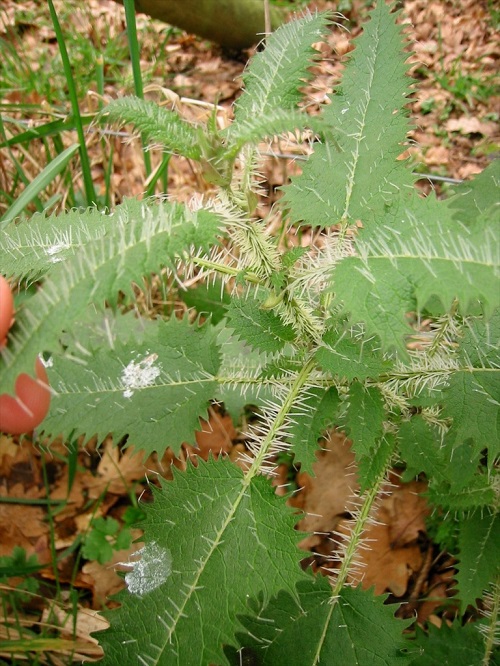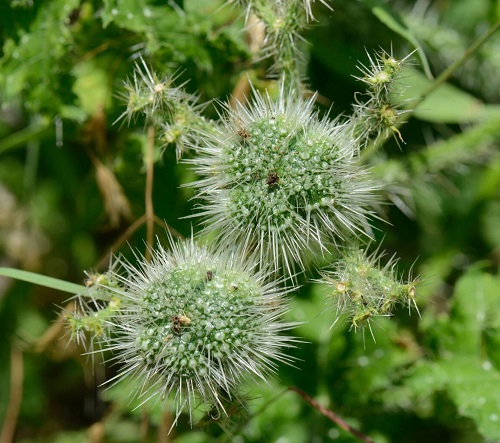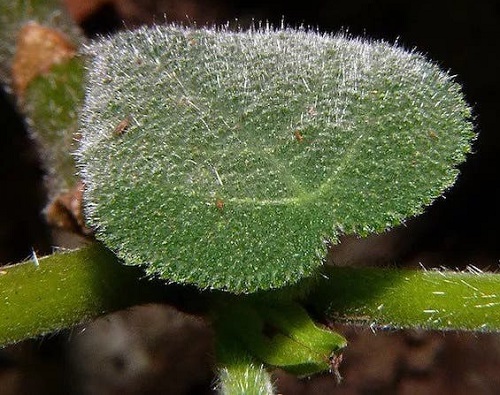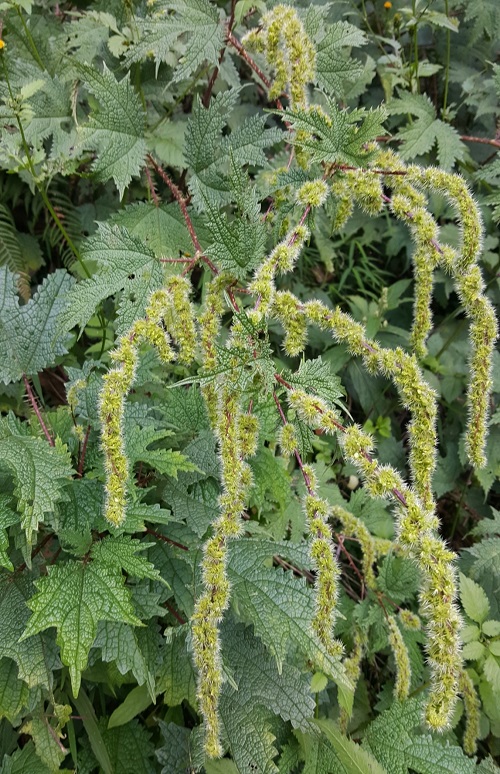Plants with Stinging Hairs have a special way of defending mechanisms that can be troublesome for humans. Here’s a list for you to stay safe!
Plants with stinging hairs use them as defence against herbivores and humans. These hairs have irritants like formic acid, histamines, and other chemicals, that can cause discomfort, irritation, redness, or even pain when they come in contact with the skin. causing pain and discomfort.
Check Out the List of Plants with Prickly Leaves
Plants with Stinging Hairs
1. Stinging Nettle

Botanical Name: Urtica dioica
This is a weedy perennial plant known for its stinging leaves that can cause irritation or a burning sensation when touched. You can easily spot it in woodlands or along riverbanks.
2. Wood Nettle

Botanical Name: Laportea canadensis
Wood nettle’s foliage and stem are covered with stinging and non-stinging hairs. It can cause painful dermatitis upon contact. So, be cautious when around it!
3. Bull Nettle
Botanical Name: Cnidoscolus stimulosus
It is not a true nettle, but still shares the common stinging hair trait with others. If you come in contact with its leaves, it may lead to red rashes and painful sensations.
4. Prickly Lettuce
Botanical Name: Lactuca virosa
This wild lettuce has prickly hairs that can make you itchy and uncomfortable. It’s stems also have mild to hard thorns that you need to be careful of!
5. Gympie
Botanical Name: Dendrocnide moroides
Australians call it a suicide plant because it contains a poison named neurotoxin that can lead to massive pain upon contact. Its stingers are too tiny; even a slight scratch can be too painful!
6. Himalayan Nettle
Botanical Name: Girardinia diversifolia
This unique nettle grows in the Himalayas and is used in traditional medicine in Nepal. The microscopic hairs on its leaves and stems can cause discomfort.
7. Japanese Nettle
Botanical Name: Urtica thunbergiana
This nettle is common in forests and near streams. Its hairs contain irritants that can cause a stinging sensation, redness, and itching upon contact with skin.
8. Tree Nettle

Botanical Name: Urtica ferox
Commonly known as ongaonga, its toothed leaves and stems can inject histamine and other chemicals that cause intense pain, irritation, and sometimes even allergic reactions upon contact with skin.







